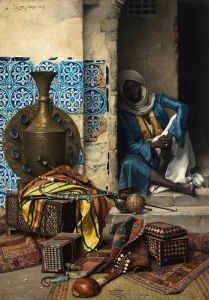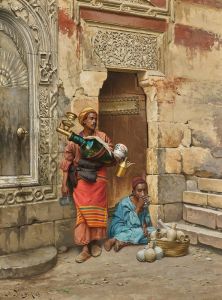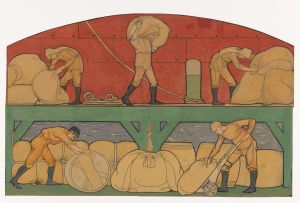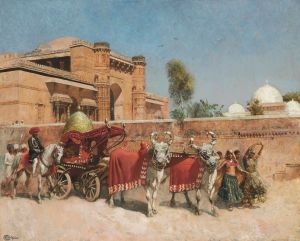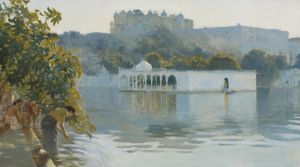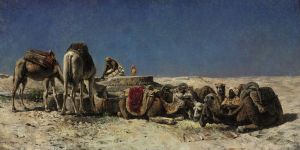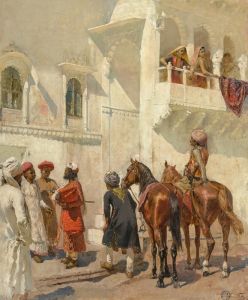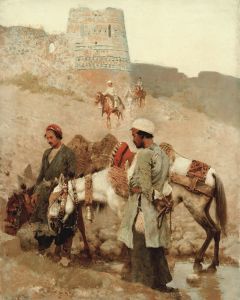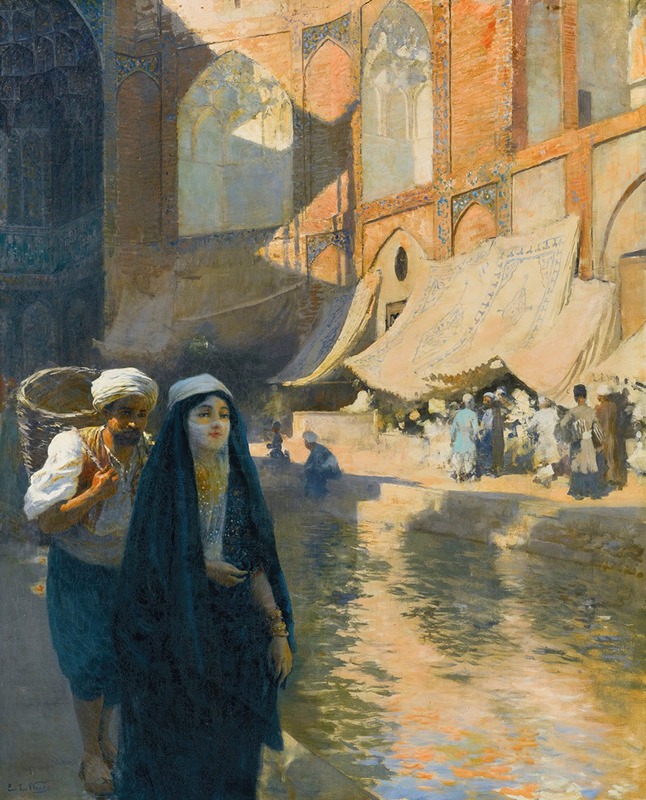
Isfahan bazaar
A hand-painted replica of Edwin Lord Weeks’s masterpiece Isfahan bazaar, meticulously crafted by professional artists to capture the true essence of the original. Each piece is created with museum-quality canvas and rare mineral pigments, carefully painted by experienced artists with delicate brushstrokes and rich, layered colors to perfectly recreate the texture of the original artwork. Unlike machine-printed reproductions, this hand-painted version brings the painting to life, infused with the artist’s emotions and skill in every stroke. Whether for personal collection or home decoration, it instantly elevates the artistic atmosphere of any space.
Edwin Lord Weeks was an American artist known for his Orientalist paintings, which depicted scenes from the Middle East, North Africa, and South Asia. Born in Boston in 1849, Weeks developed an early interest in travel and art, which led him to study painting in Paris under the tutelage of Jean-Léon Gérôme, a prominent Orientalist painter. Weeks became renowned for his detailed and vibrant depictions of exotic locales, capturing the architecture, people, and daily life of the regions he visited.
One of Weeks' notable works is "Isfahan Bazaar," which portrays a bustling scene in the historic bazaar of Isfahan, a city in present-day Iran. Isfahan, known for its rich cultural heritage and stunning Islamic architecture, was a significant center of trade and commerce during the Safavid dynasty. The bazaar, a central feature of the city, served as a hub for merchants and traders from various regions, offering a wide array of goods, from textiles and spices to precious metals and crafts.
In "Isfahan Bazaar," Weeks captures the vibrant atmosphere and intricate details of the marketplace. The painting is characterized by its meticulous attention to architectural elements, such as the arched ceilings and ornate tile work that are emblematic of Persian design. The use of light and shadow in the painting highlights the bustling activity within the bazaar, with figures engaged in trade and conversation, adding a dynamic quality to the scene.
Weeks' work is notable for its ethnographic accuracy, as he often traveled extensively to the locations he painted, immersing himself in the local culture and environment. His paintings are considered valuable historical records, providing insight into the daily life and architectural grandeur of the regions he visited. "Isfahan Bazaar" is a testament to Weeks' skill in capturing the essence of a place, combining his artistic talent with a keen eye for detail and cultural authenticity.
The painting reflects the broader Orientalist movement of the 19th century, where Western artists and writers depicted the East as a place of romance, mystery, and exoticism. While Orientalism has been critiqued for its stereotypical portrayals and colonial undertones, Weeks' work is often appreciated for its respectful and detailed representation of the cultures he encountered.
Edwin Lord Weeks' legacy as an Orientalist painter is marked by his ability to convey the beauty and complexity of the regions he depicted. His paintings, including "Isfahan Bazaar," continue to be admired for their artistic merit and historical significance, offering viewers a glimpse into a world that fascinated the Western imagination during his time. Today, Weeks' works are held in various collections and museums, where they continue to be studied and appreciated for their contribution to the understanding of 19th-century Orientalism and cross-cultural exchange.








